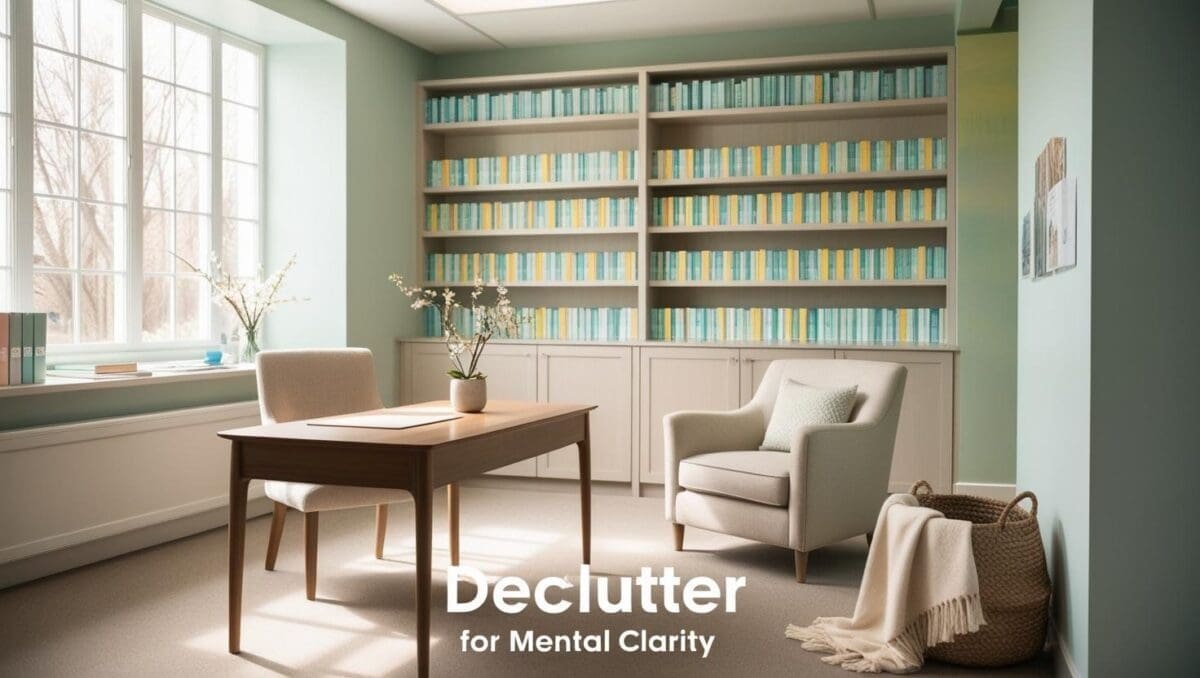The Power of Color in Therapy Office Design
Imagine walking into a therapy office bathed in soft, warm hues—where gentle beige, muted pastels, and natural earth tones create a sense of peace and emotional balance. The walls are free of harsh contrasts, the furniture is thoughtfully coordinated, and the overall ambiance feels light, airy, and intentionally calming.
In a minimalist therapy office, the color palette does more than just decorate the space—it sets the emotional tone for both the therapist and client. Certain colors can evoke calmness, security, and focus, while others may unintentionally create tension or overstimulation.
This guide will walk you through the best minimalist color palettes for therapy offices, helping you choose shades that foster relaxation, trust, and emotional well-being.
1. The Psychology of Color in Therapy Offices
Color influences mood, perception, and even cognitive processing, making it a crucial element in therapy office decor. Minimalist design relies on soft, neutral, and natural hues to create a balanced, harmonious space.
Best Color Choices for a Therapy Office:
✅ Warm Whites & Creams – Creates an airy, open feel without feeling stark or clinical.
✅ Soft Beiges & Taupes – Adds warmth and comfort while keeping the space neutral.
✅ Muted Earth Tones – Natural hues like terracotta, sage green, or clay promote grounding and emotional stability.
✅ Blush & Dusty Pinks – Subtle feminine touches that feel warm, welcoming, and emotionally soothing.
✅ Dusty Blues & Soft Grays – Encourages relaxation and a sense of trust without feeling cold.
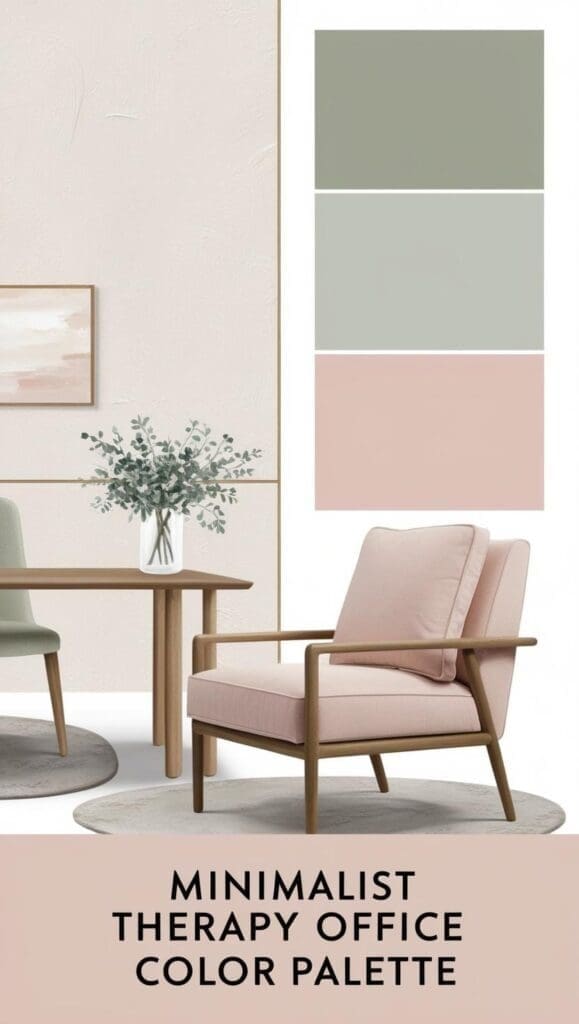
🎨 Minimalist Therapy Office Color Palette:
- Warm White (#F5F3EF)
- Soft Beige (#E3D5C9)
- Muted Sage (#A8B5A2)
- Blush Pink (#E8C3BA)
- Light Taupe (#B8A89A)
2. Warm & Cozy Neutrals: The Foundation of Minimalist Therapy Office Decor
Neutrals are the backbone of minimalist therapy office decor. They create a calm, elegant, and timeless space while keeping the environment free from visual clutter.
How to Use Neutral Tones in a Therapy Office:
✔ Walls & Flooring: Stick to off-whites, warm greys, and soft taupes for a bright yet cozy look.
✔ Furniture: Choose linen, beige, or cream-colored upholstery for chairs and sofas.
✔ Accents: Use wood tones in natural oak or walnut to add warmth and depth.
A warm and cozy neutral color palette that enhances a minimalist therapy office without feeling cold or stark:
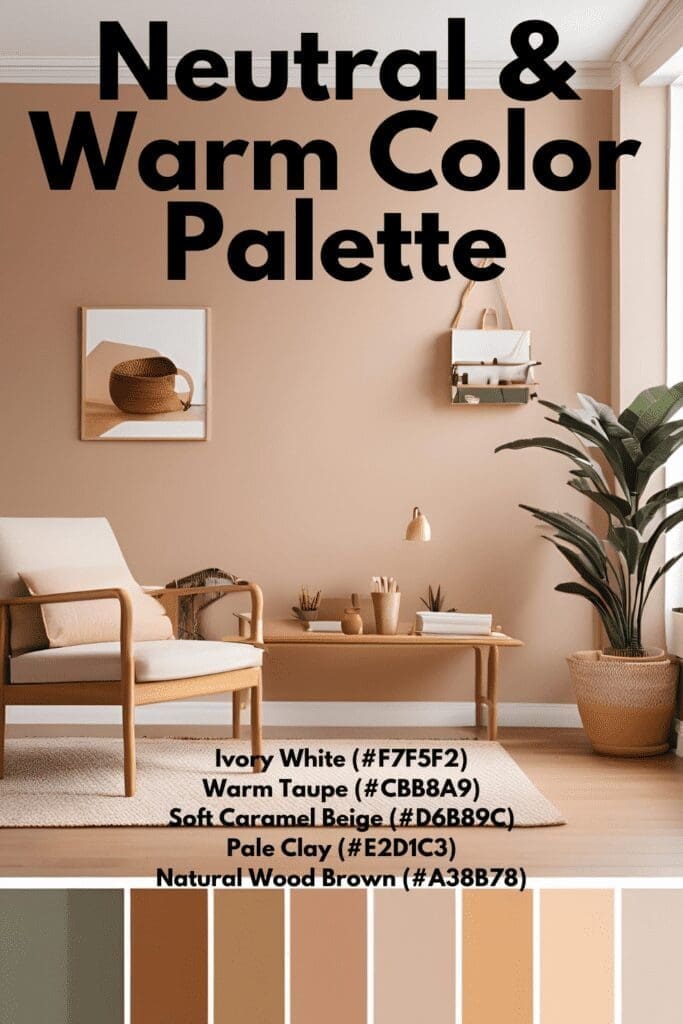
🎨 Neutral & Warm Color Palette:
- Ivory White (#F7F5F2)
- Warm Taupe (#CBB8A9)
- Soft Caramel Beige (#D6B89C)
- Pale Clay (#E2D1C3)
- Natural Wood Brown (#A38B78)
3. Soft Earthy Tones: Bringing Nature Indoors
Bringing in earthy tones like muted greens, warm browns, and terracotta can add a grounding, organic feel to a therapy space. These tones connect the mind to nature, stability, and emotional balance.
How to Use Earthy Tones in a Minimalist Therapy Office:
✔ Accent Walls: A soft sage green or warm terracotta can add a subtle but soothing touch.
✔ Decor Accents: Use ceramic vases, dried pampas grass, or stone textures for natural warmth.
✔ Plants: A single fiddle leaf fig or peace lily enhances the organic aesthetic.
A soothing earthy color palette inspired by nature, ideal for therapy offices seeking warmth and balance:
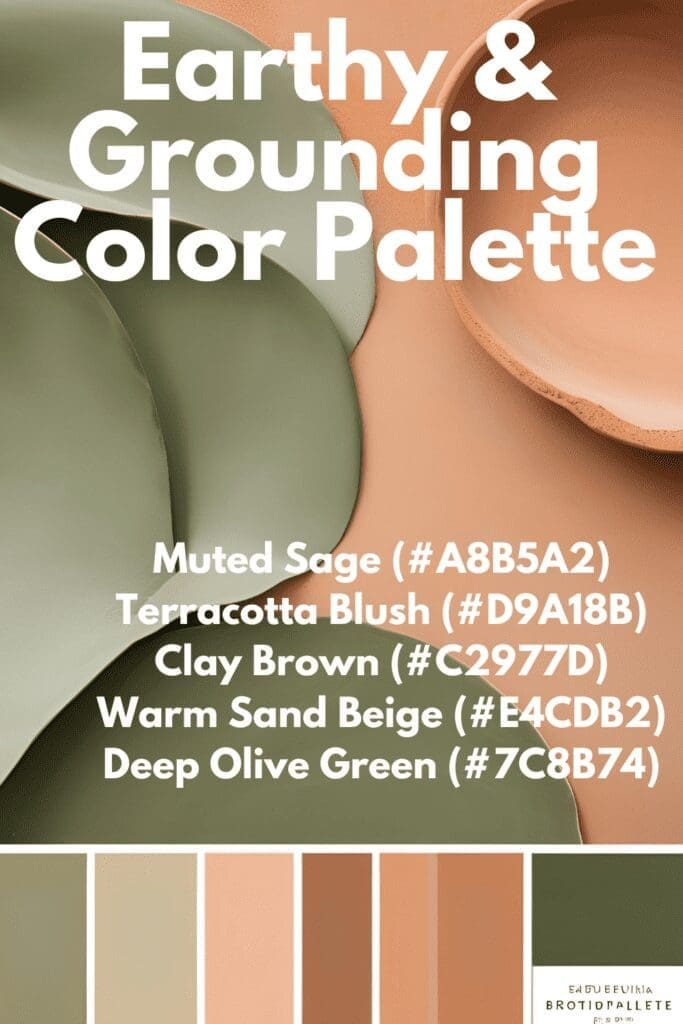
🎨 Earthy & Grounding Color Palette:
- Muted Sage (#A8B5A2)
- Terracotta Blush (#D9A18B)
- Clay Brown (#C2977D)
- Warm Sand Beige (#E4CDB2)
- Deep Olive Green (#7C8B74)
4. Blush & Pastel Tones: A Feminine and Comforting Touch
Blush pinks, dusty roses, and soft pastels add warmth and emotional depth to a therapy office while maintaining a minimalist and sophisticated feel.
How to Incorporate Blush & Pastels:
✔ Accent Pillows & Throws: Blush-toned linen or velvet adds soft contrast.
✔ Artwork & Decor: Use muted floral prints or abstract pastel paintings.
✔ Soft Pastel Walls: Opt for a light peachy-beige or muted dusty pink to maintain warmth without overpowering the space.
A feminine, soft pastel color palette designed for a delicate, inviting therapy office:

🎨 Blush & Pastel Minimalist Color Palette:
- Dusty Rose (#E8C3BA)
- Muted Peach Beige (#F3D5C0)
- Soft Lavender Gray (#D1C2D1)
- Warm Blush Pink (#F2B8A2)
- Pale Nude Beige (#F6E4DB)
5. How to Choose the Right Minimalist Color Palette for Your Therapy Office
Selecting the perfect minimalist color palette depends on your office’s natural lighting, furniture choices, and personal style.
Steps to Find Your Ideal Palette:
✔ Observe Your Natural Light: Warm whites work best in well-lit spaces, while earth tones can make dim rooms feel cozier.
✔ Test Paint Swatches in Different Lighting: Colors can shift throughout the day—always test before painting.
✔ Choose a Primary & Accent Color: Stick to one base color (white, beige, or gray) and 1–2 accents (sage green, blush pink, or soft taupe).
✔ Incorporate Textures & Layers: Soft linens, natural woods, and ceramic details enhance warmth and depth.
A soft, harmonious therapy office color palette blending warm neutrals with a hint of earthy green and blush accents:
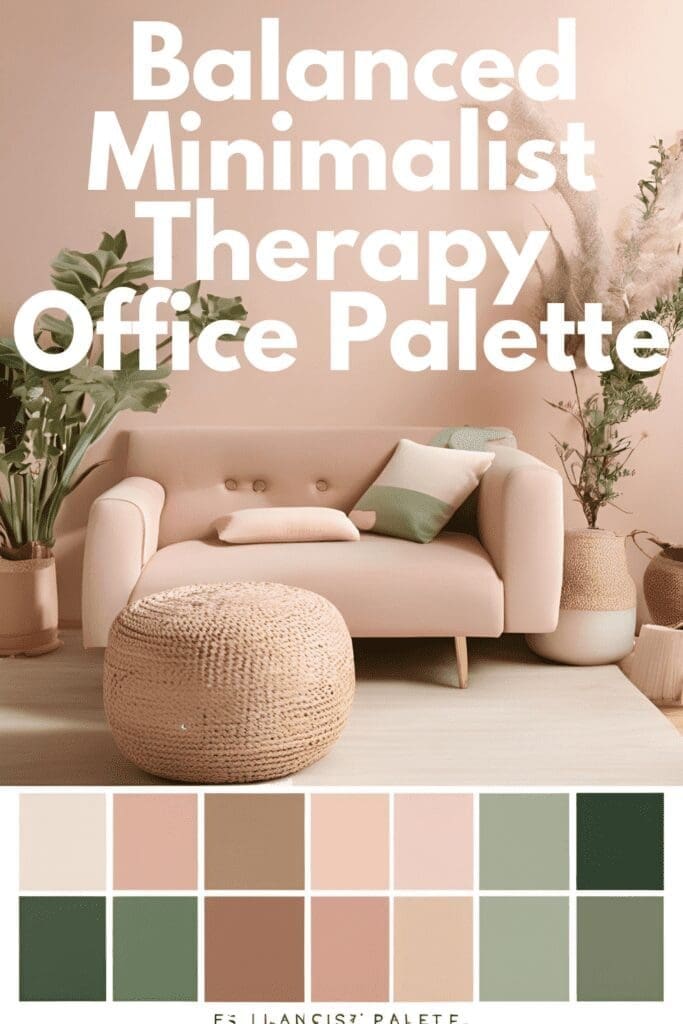
🎨 Balanced Minimalist Therapy Office Palette:
- Warm Off-White (#F5F3EF)
- Soft Beige Gray (#D9D1C8)
- Blush Dusty Rose (#E8B9A4)
- Sage Green Accent (#A8B5A2)
- Light Walnut Wood (#B8A89A)
Final Thoughts
A well-chosen minimalist color palette can transform your therapy office into a serene, healing space that supports emotional well-being. Whether you choose warm neutrals, earthy tones, soft pastels, or a blend of them all, your color choices will create an environment that enhances comfort, trust, and relaxation for every client who walks through the door.

About the Author
Hi, I’m Eve, a former school counselor with a master’s degree in School Psychology and a passionate advocate for children and families navigating sensory challenges. As a mom of children with sensory sensitivities, I deeply understand the journey special-needs parents face, and I dedicate myself to researching and sharing practical solutions to help children thrive and feel comfortable in their bodies. My goal is also to empower counselors, therapists, and psychologists with creative strategies and supportive resources to enrich their everyday practice. When I’m not writing or exploring new therapeutic approaches, you’ll find me spending quality time with my family and continually seeking inspiration from everyday moments.

